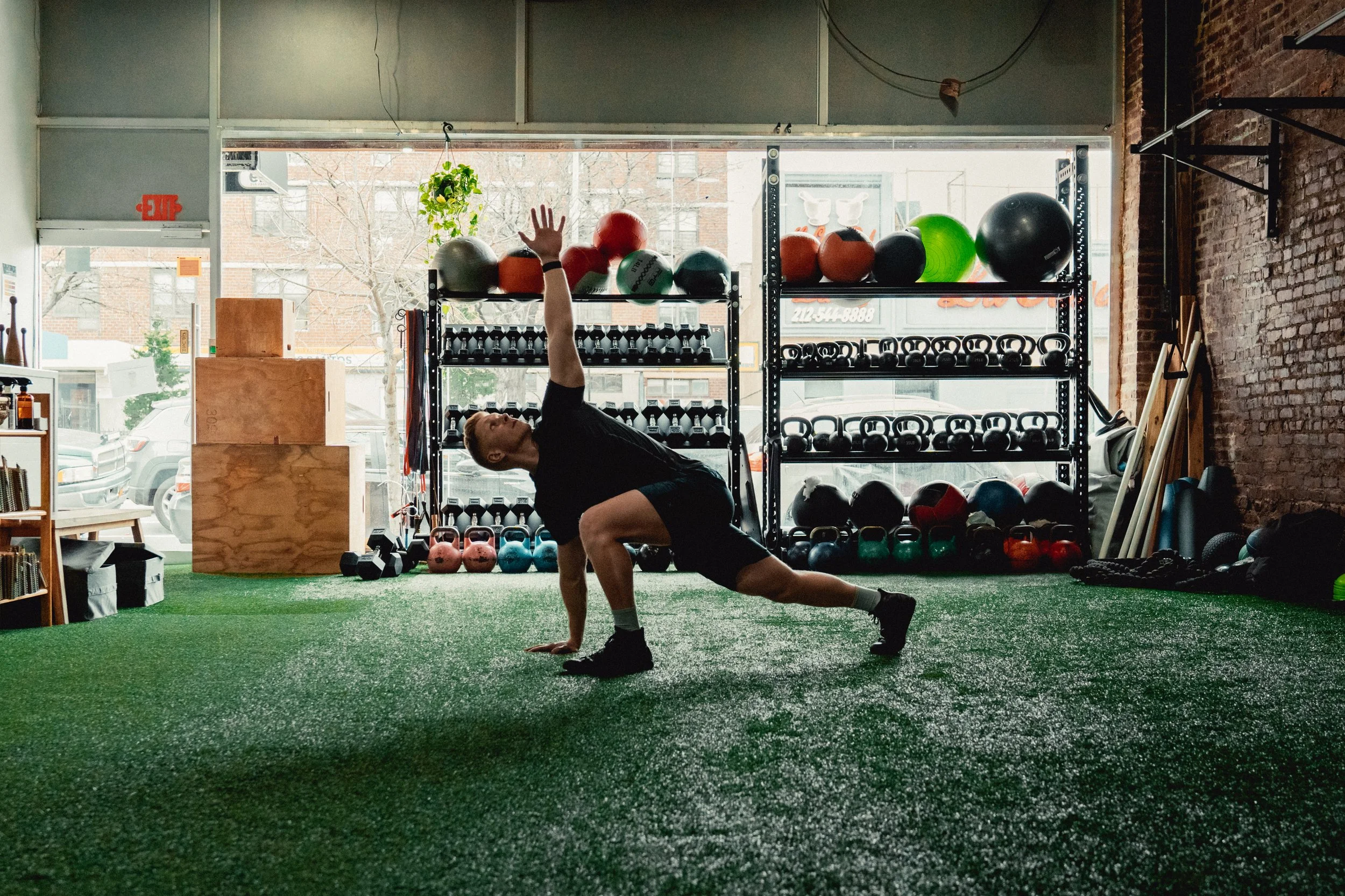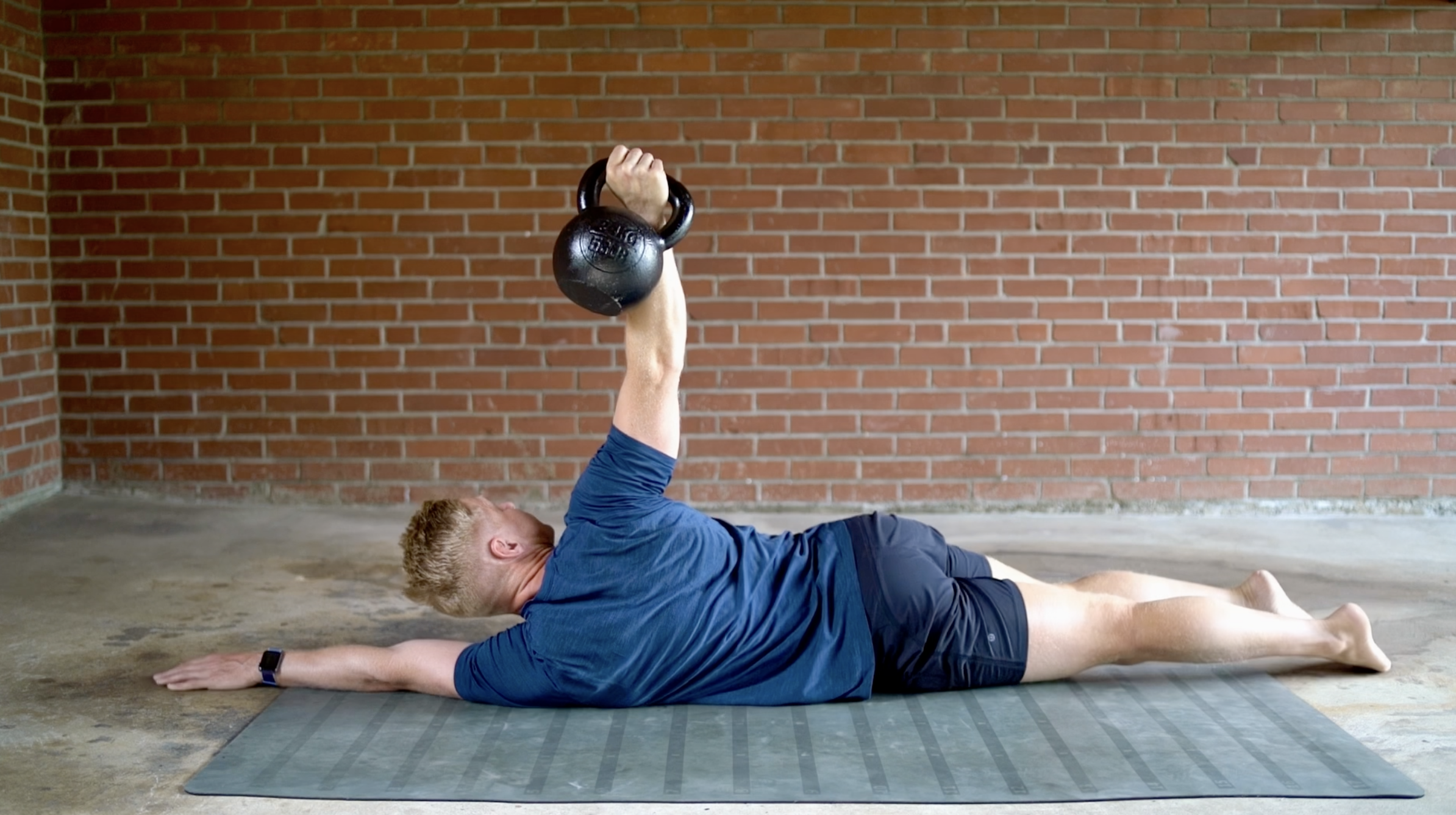Overcoming Swimmer's Shoulder: My Journey to Overcome Shoulder Discomfort and Get Back to Sprint Swimming
/I've been dealing with nagging left shoulder discomfort for several months that just won't seem to go away. While I am able to perform 99% of the swims and lifts, I would like, it's been frustrating to have this shoulder issue limiting my ability to sprint and perform at my highest level. As a 42 year old competitive swimmer and strength coach, I want to be proactive about my shoulder health and performance.
In this post, I want to share my shoulder story, what I've tried so far to fix it, and the new treatment plan I'm going to implement after an insightful session with physical therapist, former D1 collegiate swimmer, Dr Alex Ewart, The Swimming PT.
About 18 months ago, I made a focused return to sprint training again and pushing my swim speed at masters meets after years of focusing more on open water swimming and marathon distance pool training. I was feeling good and making progress lowering my times to some of my best in-season college performances. However, my shoulders would feel increasingly cranky after these events, with setbacks in the intensity I could sustain in the pool and gym. I was able to continue to train and stay fit, but not that additional 1-2% of intensity I was pursuing to swim my fastest.
Working under the guidance of a local New York City practitioner, my right shoulder improved with targeted breath and mobility work, and my own strength and swim programming, but then a few months later, I started to feel some pinching and clicking in my left shoulder, especially when sprinting freestyle and breaststroke at higher speeds.
The pain hasn't gotten worse necessarily, but it's persistent and really bugs me when I try to swim fast, preventing me from sprinting at top speeds. I can still train around it for the most part, but it's been hanging around now for many months despite my best efforts to fix it.
What I've Tried So Far to Treat My Shoulder
I'm usually pretty good at navigating my own limitations, but this left shoulder thing has had me baffled. Here are some of the things I've tried over the past several months or so to try to resolve it, without much lasting success:
Mobility work - Focusing on the posterior capsule, spinal rotation, and overhead position.
Soft tissue work - Lacrosse ball on muscles around the shoulder girdle
Breathwork - drills to improve expansion, mobility, and position of my ribcage and how that affects my shoulder movement.
Shoulder stability - rotator cuff isometrics, serratus anterior strengthening, and dynamic stabilization.
Training modifications - Avoiding provocative motions and intensities during lifts and swims
While I have not been 100% compliant with a proactive approach to recovering; I'm usually good about listening to my body and not pushing into pain. But I just can't seem to truly pinpoint the culprit and get back to 100%.
New Game Plan After Physical Therapy Assessment
I recently had an incredibly helpful virtual assessment with swimming physical therapist Alex Ewart where he took me through a very thorough movement assessment centering on my left shoulder.
We looked at my neck mobility, performed tests in different shoulder positions, and identified some deficits including:
Irritation of infraspinatus/teres minor
Likely some subscapularis involvement
Possible nerve sensitization feeding into elbow
Rather than throwing a bunch of treatments at it, we're going to focus on just a few key areas:
1. Target subscapularis strengthening
I'm going to do internal rotation isometrics either against a wall or lying on my back with resistance bands, aiming for higher volume like 3-4 sets of 30-45 second holds to improve endurance, and should function as a fatigue in the water.
I am also going to experiment with banded internal rotations at 90/90 either standing or seated to get full ROM strengthening in my catch position.
2. Improve serratus anterior function
To upwardly rotate my shoulder blade better, improving overhead position, I'll perform exercises like:
Scapular push ups - 3 sets of 10-15 reps focusing on protraction
Crawling - mobilize scapula and thoracic spine, and work serratus anterior
1-arm planks - serratus anterior strengthen, rotator cuff stabilization, and core.
3. Address neck tightness
Even though neck didn't show major red flags, still going to implement chin tucks with rotation on all fours to reduce tension from levator scapulae and allow better upward rotation of the shoulder blade.
4. Continue posterior shoulder soft tissue work
Going to be more diligent about using a trigger point ball to roll out the back of my shoulder, specifically the posterior capsule, teres minor and infraspinatus.
5. Integrate upper trap and upward scapular exercises
Adding in prone trap raises and rhythmic stabilizations in quadruped to strengthen upper traps and work on scapular control.
I'm optimistic about this plan because it's specific based on my unique situation as a swimmer, who is generally strong, versus a generic protocol, and allows me to continue to push and challenge other areas of my fitness and performance. Excited to see how treating these targeted areas affects both my strength and subjective pain levels. I'll check back in a few weeks with an update on my progress!
Do you have shoulder pain when you swim or lift? Schedule an in-person or virtual consultation with Dr Alex Ewart, and get back to training your best!












